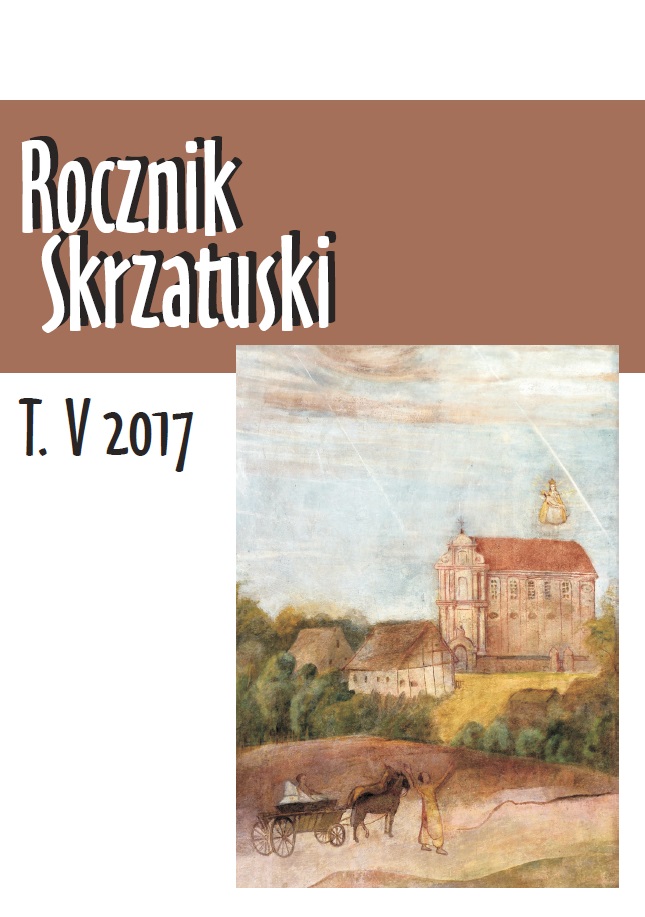
We kindly inform you that, as long as the subject affiliation of our 300.000+ articles is in progress, you might get unsufficient or no results on your third level or second level search. In this case, please broaden your search criteria.

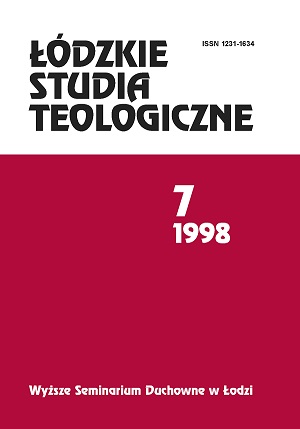
The review of: - Wolf-Dieter Hauschild, Lehrbuch der Kirchen- und Dogmengeschichte, - Band I: Alte Kirche und Mittelalter, Gütersloch 1995, ss. 694.
More...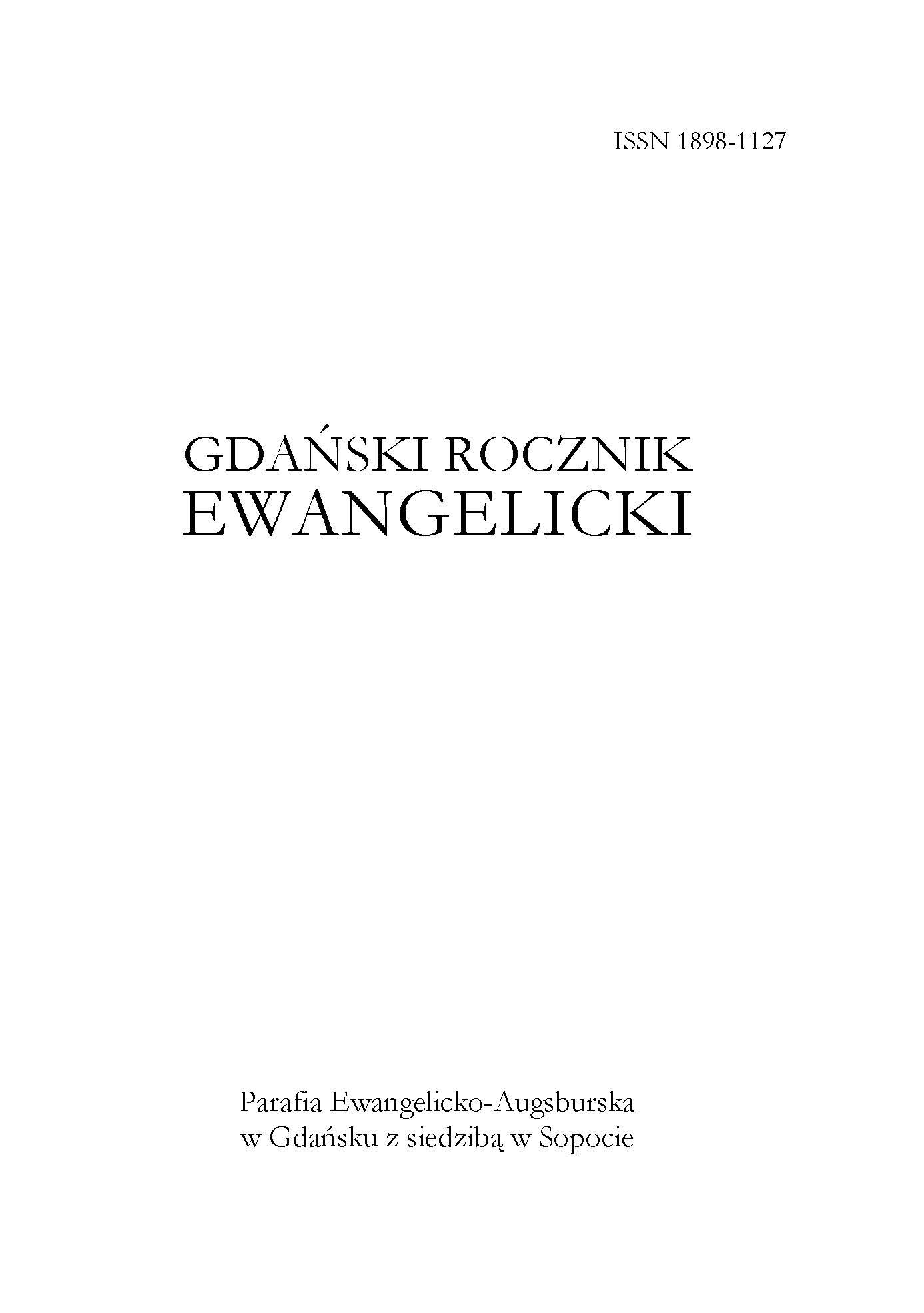
The article presents a report on the relations between the three main religious groups of Gdańsk: Lutherans, Catholics and Calvinists in the period of the first three centuries after the proclamation of Martin Luther’s theses in Wittenberg (1517). The report includesthe periods of the Polish-Lithuanian Commonwealth (until 1793), Napoleonic epoch (1807-1814) and first years of the Prussian partition (until 1817). At that time the Lutherans were the dominant religious group in Gdańsk, but they failed to take the total control of the city. The Catholics lost their precedence soon after the Reformation, but they increased their number until the beginning of the 19th century and strengthened social and cultural influences at that time. The Calvinists were the biggest losers in that confrontation, because they didnot manage to dominate the city (at the turn of 16th and 17th centuries), lost believers and finally were subordinated to the Lutherans within the Evangelical Union (1817). The religions under discussion sometimes formed alliances, but it was not always the alliance between both groups of Protestants. Especially during the expansion of Calvinism in the city, the Lutherans looked for help from the Catholics and sometimes the latter provided them a real support.
More...
The hermitage of Wigry Island has not got a full monograph study so far. This article brings new and fundamental arrangements regarding to the Camaldolese monastery in Wigry. It shows the region of present-day Suwalki, before the hermits came. It presents the state of research over the history of hermitages in Wigry. It depicts circumstances of the founding process made by the King John Casimir in 1667, building of the monastery complex in Wigry and the arranging process of the peninsula. It describes the process of everyday life of the hermits, their pastoral care of local population. Camaldolese are presented as pioneers of economic development in the region of Suwalki. It presents their 132 years activity in religious, cultural, social and economical aspect that was stopped by winding up the monastery in the Prussian annexation. This article enrich all knowledge up to now on Camaldolese monastery in Wigry, expands historiographic and pastoral output in the extent of research of history of Suwalki region.
More...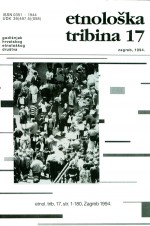
The article deals with Old Catholicism in the village of Šaptinovci near Našice (Slavonia, Croatia), as one among numerous interesting phenomena illustrating popular religiosity in the Našice area. Old Catholicism is the movement resulting from reformatory processes which took place in the framework of Catholic Church in Croatia in 1920’s. Only few researchers have so far dealt whith the causes, phenomenon and activities of movement and they were mostly historians, sociologists or theologists. However, the basic objective of the author’s ethnological research is to record and to describe the development of Old Catholic Church, taking as an example the village of Šaptinovci because it is the only still existing Old Catholic Church country parish in Croatia. The ways in which Old Catholicizm has reflected and influencedevery day life in the village are also analyzed.
More...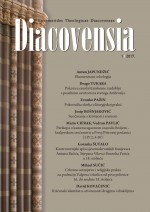
Based on the published canonical visitations and available literature, the author analyzes the church organization and religious practices in Valpovo and the surrounding area, that is, in the area of parishes that were present there from the first half of the 16th century to the mid-18th century. It is both an analysis of the relationship of the church and civil authorities toward the centers and other parts of the parishes, but also of people’s reactions which sometimes occurred as a cause, and sometimes as a consequence to the mentioned authorities and their relationship. As a result of all this, for the entire examined period, there are differences between the set religious expressions and the lived religion that becomes imbued with elements of syncretism.
More...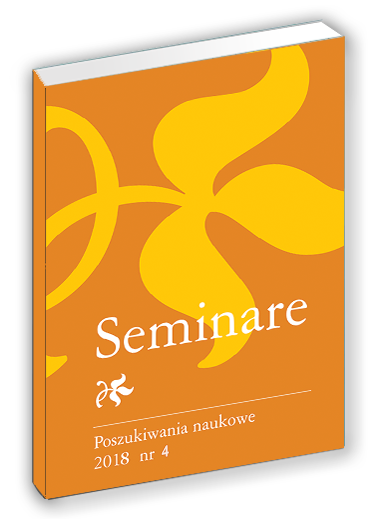
The present paper raises the issue of social insurance for the clergy in the Catholic Church. The first part provides the historical background, norms of the 1917 Code of Canon Law and indications of the Second Vatican Council. The next part discusses the current decrees of canon law and solutions adopted in Poland. At present, the Church has abandoned the beneficial system. Systemic church solutions are based on state legislation. In their absence, decisions are made by the Bishops’ Conference, as well as individual particular Churches. It refers both to social and health insurance.
More...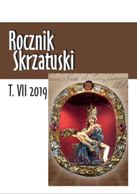
The purpose of the article is to study the degree of research of Orthodox temple architectural complexes on the territory of the modern Lugansk region. The methodology is based on a comparative-analytical approach using the method of systematisation. The scientific novelty of the work lies in the fact that an analysis of the modern scientific literature on the Orthodox churches in Lugansk region was carried out for the first time. Is showed that the available few editions do not allow us to draw a complete picture of the Orthodox church building development in the Lugansk region, of its connection with the regional culture, about artistic and stylistic preferences in the cult architecture and its figurative and aesthetic aspects. Conclusions: it has been established that publications of catalogue type prevail on this topic, which indicates the primary stage of identification and accumulation of material, at the stage of which the process of investigating the temples of Lugansk region is located. Some publications contain erroneous data, which is quite understandable by the disparity of the empirical material and its insufficient research. If, in spite of the fragmentation and disunity of the material in general, the history of some temples of the region is still fixed in scientific publications, reference books, periodicals, but the architectural and stylistic aspect of the Luhansk region temples has practically remained beyond the scope of scientific interest. To preserve the national cultural heritage, historical and cultural studies and art history studies of the Orthodox religious architecture of the Lugansk region are necessary for the entire period of its existence.
More...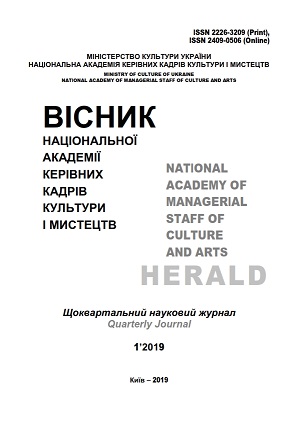
The purpose of the article is to determine the process of transformation of the medieval iconostasis with wall-to-wall horizontal beams as main structural/supporting elements to the new type – iconostasis as an architectural frame – which it becomes on the border of the 16–17th century. The research methodology is based on the iconological and comparative methods, which allow identifying the rules of construction, combinations, and relationships between the structural elements of the architectural frame of the XVII century Ukrainian iconostasis, to determine the ideological sources of the formation of such model of the iconostasis and disclose its meanings. The scientific novelty of the work is connected with the expansion of knowledge about the development of the Ukrainian iconostasis. Among the main sources that influenced the formation of the new image of the Ukrainian iconostasis were the Greek tradition of organizing sanctuary barriers and the Latin tradition of framing a religious image. Creating a new concept of the Ukrainian iconostasis at the junction of two traditions was a reaction to the social and political context of the period, which appeared in the Western European art of the Renaissance. Conclusions. Creating a new concept of the Ukrainian iconostasis at the junction of two traditions was a reaction to the social and political context of the period. The introduction to the Ukrainian iconostasis of the frames and its transformation at the beginning of the 17th century in an architectural frame gives the basis to consider this transformation as an ideological project. The new design of the Ukrainian iconostasis, due to the introduction of the blind arcade in the upper tier and the abundant decoration of all surfaces, referred to a similar device of the iconoscopes of the Balkans, and especially the iconostases of Athos. Under the conditions of the establishment of the Greek Catholic Church, such iconostasis construction was a visual marker of the confessional identity of an Orthodox Ukrainian church. At the same time, one of the goals of simultaneously increasing the spatial depth of the iconostasis could be the desire to strengthen the emotional impression of its new architectural image. The use of monumental volumetric structures to influence the consciousness of believers is a technique widely used by the Catholic the art of the time.
More...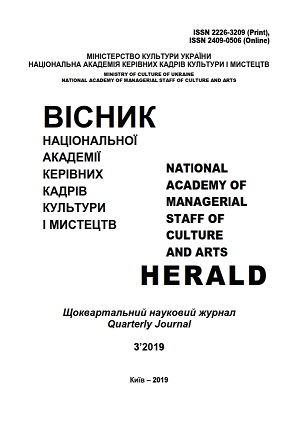
The purpose of the article is to analyze the transformation of the golden background semantics in Ukrainian sacral mural paintings in the 1850–1900s a case study of Kyiv-Pechersk Lavra‘s cathedrals, Kyiv St. Sophia Cathedral, Kyiv St. Volodymyr‘s Cathedral. Methodology is based on the comparative and iconological methods, art study analysis, including iconographic one to study painting decoration cathedrals and the development of the golden color module semantics. The scientific novelty of the work is to discover the transformation of the Byzantine semantics of the golden background in Ukrainian sacral murals of the second part of the 19th – early 20th century. The cathedral in there was a return to the golden color module in the direction of Byzantine aesthetics has been determined. According to the archival documents the transformation of iconography and the ideological content of the murals after the use of the golden background have been observed. The analysis of the murals of the famous Kyiv Orthodox cathedrals in the aspect of the features of the golden background semantics and the correlation of symbolic and decorative functions is carried out. Conclusions. The semantics golden background in Ukrainian sacral mural paintings has changed in the 1850–the 1900s. The return to the Byzantine tradition of the golden background for the creation Divine world image in the temple space was held at Kyiv St. Sophia Cathedral, when in the main part murals the golden color module was used as the basis. The same combination of symbolic and decorative functions of golden light was inherent to the decoration of the Kyiv-Pechersk Lavra‘s Dormition Cathedral. The symbolism of gold is inferior to the balance of the general composition in Kyiv St. Volodymyr‘s Cathedral. The decorative function submits symbolic one in the Lavra‘s Sts. Anthony and Theodosius church with the Refectory.
More...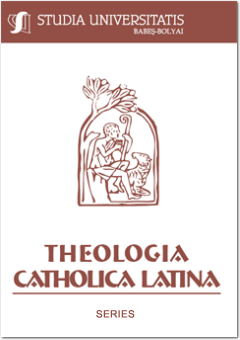
At the beginning of the 16th century the Diocese of Transylvania, which was over 60,000 square meters, had an extensive ecclesiastical infrastructure. Under the bishop‘s leadership, a 24-member cathedral chapter led the 600 parishes in the thirteen main districts. More than 1,000 monks lived in over fifty monasteries. This seemingly powerful community has practically ceased to exist within the short 25 to 30 years due to the desire for spiritual renewal and social policy. Without its bishopric and chapter leader, there was only one monastery and about thirty parishes. It was saved from the total destruction by the incredibly coherent and persistent work of the Jesuits, and by the counter-reformation that strengthened with the help of the Habsburgs, and by - most of all - the few faithful Catholics and their self-organizing activities. Thus, the Catholic autonomy was strengthened by the hierarchically organized Catholic Church that secular believers gained a status that is unique throughout the world. The purpose of my paper is to present that age and the birth of Catholic Status, also known as Catholic autonomy.
More...
The article intends to present, briefly, the life and activity of the apostolic vicars who led the Catholic community of Moldavia during the Apostolic Vicarage period, which was founded in 1818, with the death of the last bishop of Bacau, Joseph Bonaventura Berardi. The period displayed, comes to an end in 1884, when Pope Leon the XIIIth promoted the Apostolic Vicarage of Moldavia to the title of diocese. The first bishop appointed was Jospeh Nicolas Camilli, who was also the last appointed apostolic vicar. It is also presented the way the catholic people of Moldavia lived and expressed their faith before and after the unification of the Romanian Principalities in 1859, showing also the significant role that the moldavian catholics played during the process of unification. The article also captures the report between the apostolic vicars, the religious authorities and those of state from the XIXth century, emphasizing on the testimony of faith expressed by the leaders of the Mission in Moldova, and also by laymen, shown to the entire Romanian society.
More...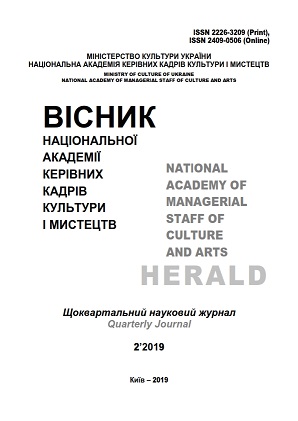
The purpose of the article. The publication attempts to determine the iconography, the manner of painting and dating of the folk art monuments from the wooden church decoration of the Central Ukraine in the first half of the XVIII century. Methodology. Within the framework of the article and on the basis of the art research studies, the main task is the introduction of the folk art monument, i.e. the Shroud from the Descent of the Holy Spirit in the village Shkarivka, Bilotserkivskyi district, Kyiv region, into the scientific circulation. Scientific Novelty. In the study, the attention of the scientific community is focused on the art studies research of the discovered unique folk art monument. The work proposed for publication is part of the research results on the development and modification of the decoration of wooden church architecture on the territory of Central Ukraine in the first half of the XVIII century. Conclusions. According to the results of the author's art studies of iconographic and stylistic features of the painting, the Shroud of the Church of the Holy Spirit's Descent in the village Shkarivka, in Bila Tserkva district, Kyiv region, we have grounds to include them in the artistic heritage of the XIX century with possible later additions.
More...
Рецензія на монографію Марини Бардік “Оновлення монументального живопису Успенського собору Києво-Печерської лаври і Софії Київської в першій половині ХІХ століття” монографія. Київ, 2019. 310 с. : іл / The review of: Bardik M. A. „ Renewal of the Monumental Paintings in the Kiev Assumption Cathedral – Pechersk Lavra and Sophia of Kiev in the first half of the 19th century: monograph. Kyiv, 2019. 310 p.: Illus.
More...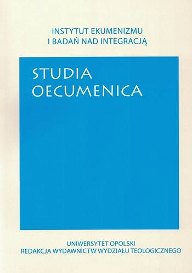
Kryzys ekologiczny jest przedmiotem troski wszystkich Kościołów chrześcijańskich. Autor omawia wspólne wątki dotyczące klimatu, jakie obecne są w wypowiedziach przywódców religijnych: odpowiedzialność człowieka za degradację środowiska, wezwanie do przeciwstawienia się kulturze chciwości, budowanie sprawiedliwości ekologicznej. Autor przedstawia społeczne skutki kryzysu klimatycznego – nierówności społeczne i ubóstwo oraz omawia nowe formy ekumenizmu praktykowane w społeczeństwie ryzyka. Nowy ekumenizm to nie ruch intelektualny czy dyskusje teologiczne, ale przede wszystkim wspólna praca Kościołów na rzecz ubogich.
More...
Choroba w życiu każdego człowieka rodzi wiele pytań natury egzystencjalnej, stąd jest to także istotny problem teologiczny. Ze względu na uniwersalność doświadczenia choroby wydaje się konieczną próba ukazania tego zagadnienia także w perspektywie ekumenicznej. Temat opracowano w trzech zasadniczych częściach. Część pierwsza, jako wprowadzająca w problematykę, zajmuje się zdefiniowaniem pojęcia choroby oraz poszukiwaniem płaszczyzny dialogu w tej kwestii między nowoczesną medycyną a współczesną teologią. Następnie autor przechodzi do prezentacji problemu w sferze ściśle ekumenicznej, gdzie nakreśla w dwóch częściach współczesne ujęcia zagadnienia choroby reprezentatywne kolejno dla teologii prawosławnej oraz protestanckiej. Stanowisko teologii prawosławnej przedstawione zostało w oparciu o prace J.-C. Larcheta i uzupełnione o poglądy J. Zizioulasa. Natomiast protestancką teologię choroby zaprezentowano w ujęciu K. Bartha. Każda z tych tradycji chrześcijańskich ma tu swoją wyraźną specyfikę, ale wspólnym elementem, choć z różną intensywnością, jest podejście personalistyczne, które potencjalnie wydaje się być tu szczególnie cenne dla dialogu teologii z nowoczesną medycyną.
More...
Ekumenizm stanowi niezwykle ważną działalność Kościoła katolickiego. Główną realizacją tej aktywności są prace specjalnych grup i komisji pomiędzy Kościołem katolickim a innymi chrześcijańskimi Kościołami i Wspólnotami. Międzynarodowa Anglikańsko-Rzymskokatolicka Komisja (ARCIC) jest grupą utworzoną w 1969 r., która dąży do ekumenicznego postępu pomiędzy Kościołem rzymskokatolickim a Kościołem anglikańskim. W trzeciej fazie prac Międzynarodowej Anglikańsko-Rzymskokatolickiej Komisji wydano pierwszy wspólny dokument zatytułowany Walking Together on the Way: Learning to be the Church – Local, Regional, Universal. Ten eklezjologiczny dokument ukazał relacje pomiędzy Kościołami lokalnymi i powszechnym, rolę arcybiskupa Canterbury oraz biskupa Rzymu, a także kondycję wspólnoty anglikańskiej w całym świecie. Autor artykułu spojrzał na ten nowy dokument ekumeniczny z perspektywy sytuacji dialogu ekumenicznego i nauczania II Soboru Watykańskiego oraz papieża emeryta Benedykta XVI.
More...
The issue of Negro-African life and culture is hereby captured in the perspective of a radical phenomenology. By subscribing his radical philosophy of the pathos of life to a tradition rupture between Husserl and Heidegger, the French philosopher Michel Henry intended to lead a breakthrough. Rooted in the experience of the “pathos of life” that borders on reason sapiential in the Negro-African symbolic universe, the cosmos-vital existence of each individual, as Kahang apprehends, finds the base, “the matrix common to all cultures of Black Africa”. Our contribution proposes to highlight the link between classical phenomenology (transcendental) and radical (material) phenomenology. Considering the work of Michel Henry, we would like to argue that sapiential phenomenology draws the task of reconstruction of African identity in its cultural manifestations, in this case in the world of Negro-African life. Seized in its aim of maturity, our reflection places the truth of the man at the heart of the experience of life, where the relation to others makes one discover the other, as well as one’s self, a “pathos-with”. Moreover, it claims precisely the place of emergence and of accomplishment of an experiment of self-affection, where the symbolic animal (animal symbolicum) is confronted with the existential questions of finitude and death, banality of evil and guilt, justice and law, domination and violence, power and struggle for recognition.
More...
Podziały kulturowe współczesnego świata, współistnienie postaw kolektywistycznych i indywidualizmu, kształtują bogactwo różnorodności, które samo w sobie może być źródłem rozwoju i postępu. Warunkiem wykorzystania potencjału różnorodności jest możliwość prowadzenia wymiany myśli, idei, poglądów i pomysłów. Niezbędne jest istnienie nieskrępowanego dialogu. Niestety, uwarunkowania kreujące kulturowe zróżnicowanie zamiast potencjału dialogu zrodziły zjawisko pogłębionej izolacji ludzi i ich wspólnot, nazwane personalizacją. W znaczący sposób kształtuje ono kondycję procesów rozwojowych, jakość współżycia i możliwość kooperacji niezbędnej dla osiągania zmiany. Sposób percepcji świata przede wszystkim kształtowany jest przez kulturę, w jakiej funkcjonujemy, w tym, w ogromnej mierze przez język dominujący w przestrzeni publicznej. Skupianie się na konflikcie, na wrogiej personalizacji postaw politycznych, zasklepianie się w jednorodnych środowiskach tworzonych przez tzw. „bańki informacyjne”, niszczy niezbędne dla rozwoju współdziałanie zróżnicowanych środowisk społecznych. Tymczasem człowiek nie został powołany, by walczyć z drugim, ale by z nim współdziałać. Początkiem takiego współdziałania jest rozpoczęcie dialogu opierającego się na wspólnocie doświadczeń. W warunkach personalizacji wszystkiego, odszukanie obszarów wspólnoty doświadczeń nie jest łatwe. Mimo tego w konkluzjach artykułu czyniona jest próba takich właśnie poszukiwań.
More...